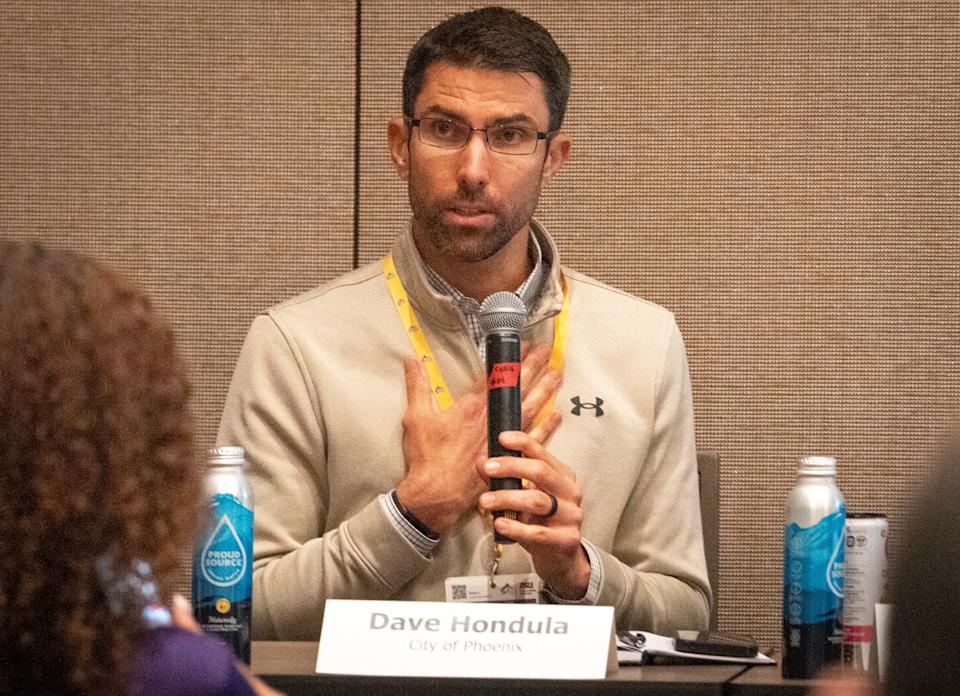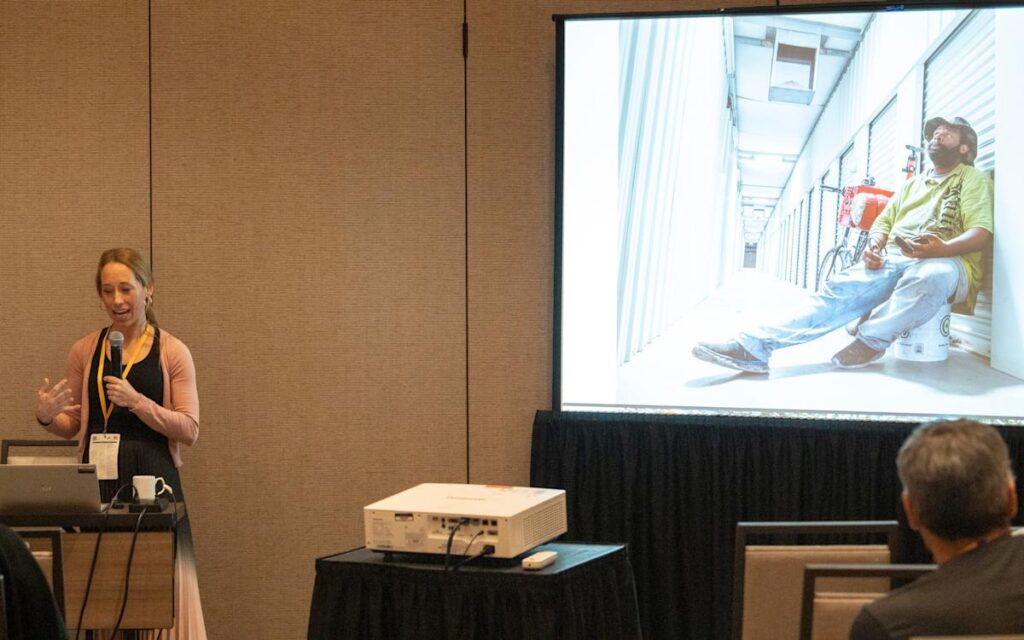A panel at the Society of Environmental Journalists conference in Tempe on April 26 explored the nuances and complexity of reporting on extreme heat.
The discussion, titled “How (and How Not) To Cover Extreme Heat: Scientifically, Ethically and Visually,” featured journalists who cover heat and the director of Phoenix’s heat response team.
“Heat is extremely complex and it’s extremely deadly,” said Joan Meiners, a climate reporter with The Arizona Republic. “It is not universally considered a disaster and is not currently recognized by FEMA. Many people are working to get it to be considered as such, though, so those who need it would be eligible for federal disaster relief funding, but we’re not there yet.”
Here are four takeaways from the conversation.
There’s no standard way of measuring extreme heat
A problem that arises when researching and writing about extreme heat is the quality of data available and the accuracy with which it was measured.
“Heat can actually be measured in a bunch of different ways,” Meiners said. “So are we talking about air temperature in the shade, air temperature in the sun, surface temperature on the ground, or are we talking about the temperature of the bench that you’re sitting on at the bus stop? These are all different and need to be talked about differently. This is only going to get more relevant.”
Joan Meiners speaks during a “How (and How Not) To Cover Extreme Heat: Scientifically, Ethically and Visually” panel at the Society of Environmental Journalists conference in Tempe, Arizona, on April 26, 2025. Photo projected on the wall is by Caitlin O’Hara.
How heat-related deaths are tracked is inconsistent
Not only is there no standardized method for where and how researchers record temperatures, but the way heat-related deaths are tracked also lacks consistency.
Monica Samayoa, a reporter with Oregon Public Broadcasting, illustrated the problem with a question she posed to researchers.
“Say somebody went to work and experienced heat illness, then went home and died a day or two later — does that count as a heat death?” Samayoa asked. “And they said they don’t track that.”
The Centers for Disease Control and Prevention introduced protocols in 2017 to encourage medical examiners to record heat as a factor on death certificates when applicable, but it has not been widely adopted, Meiners said.
“So the data is a mess,” she said.
Heat demands various responses: Cooling centers, respite centers, hydration stations
Phoenix is one of the few cities where the government formally recognizes the complications of extreme heat, which the city’s Office of Heat Response and Mitigation helps address.
Dave Hondula, Phoenix’s heat response team director, said extreme heat disproportionately affects the homeless population and is especially dangerous to people who use drugs or other substances.
“We are trying to understand where we can keep certain services, where we can push for more, and where we can transformatively change,” Hondula said.
His office works to help alleviate the dangerous consequences of the extreme heat by organizing both short-term and long-term heat relief for those who need it in Phoenix.
“One of the important changes we have made is in definitions,” Hondula said. “We call an indoor location that’s available with air conditioning for short-term relief a cooling center. We also added a definition for a respite center, as a place available for prolonged rest indoors, recognizing that some facilities, faith-based in particular, were opening their doors and allowing people to come in and sleep for the afternoon or evening. We also have hydration stations available to those in need.”

Dave Hondula speaks during a “How (and How Not) To Cover Extreme Heat: Scientifically, Ethically and Visually” panel at the Society of Environmental Journalists conference in Tempe, Arizona, on April 26, 2025.
Journalists face danger from heat too, reporter says
Caitlin O’Hara, a Phoenix-area freelance photojournalist, said journalists are at risk when they’re out reporting in extreme heat, the same as the people they are covering.
“I would advise that when you are working in the field, you limit your exposure to 45 minutes of heat at a time, then take the time to cool down,” O’Hara said. “The other thing to consider is to protect your equipment; many electronic devices die very quickly in the heat.”
Sedona Hartley is a senior at the University of Arizona and is part of a student newsroom led by The Arizona Republic.
Coverage of the Society of Environmental Journalists conference is supported by Arizona State University’s Cronkite School of Journalism, the University of Arizona, the Nina Mason Pulliam Charitable Trust and the Arizona Media Association.
These stories are published open-source for other news outlets and organizations to share and republish, with credit and links to azcentral.com.
This article originally appeared on Arizona Republic: 4 things to know about extreme heat
Read the full article here


